Japanese Food Sashimi
What is Sashimi
Sashimi (刺身) is Japanese food in the form of seafood with a prime freshness that is directly eaten in a raw state with flavorings such as soy sauce, grated ginger, and wasabi. Fresh seafood such as fish, shellfish, and crayfish are served in the form of small slices that are easy to eat, while small shrimp are only peeled and removed their heads.
Tsuma is a term for accompanying food ingredients that can be radish cut in length with very fine size, green leaves called Oba (Aojizo), or seaweed such as Wakame and Tosakanori.
Sashimi also means enjoying something raw, from raw cuts of horse meat (Basashi), chicken meat (Torisashi), chicken liver or beef liver, to pieces of Konnyaku and beancurd called Yuba. In the Kansai area, sashimi is better known as O-tsukuri.
The history of Shasimi
There is an opinion that the habit of eating fresh cuts of meat without cooking is as old as human history, but this habit can continue or disappear depending on the environmental conditions of residence. Japan is an island country with fresh seafood that can be enjoyed throughout the year, so the habit of enjoying fresh seafood without being cooked continues.
Sashimi's special food has been around for centuries, it is said that the habit of eating raw food for Japanese people has existed since their ancestors first set foot on Japanese soil. However, along with the times, raw fish-eating habits in Japan began to decrease because other types of food have been found. However, Sashimi is still popular with Japanese citizens.
Meanwhile, the word Sashimi is derived from the word Sashi which means pierced and Mi which means meat, so Sashimi means skewered meat. Another opinion says that Sashimi is taken from the word Namashishi which means raw meat and Namasuki which means fresh cut. In general, Sashimi is sea fish meat which is thinly sliced into several parts. Sashimi eating habits in Japan are also supported by a lot of sea products that can be enjoyed every day.
kind of sashimi type
In addition to sushi, Japanese food that is not less attractive to many people is sashimi. Sashimi is a fresh seafood culinary which is directly eaten raw with flavorings such as soy sauce, grated ginger, and wasabi.
Sashimi usually consists of fresh seafood such as fish, octopus, squid, clams, and shrimp served in the form of small slices, while small shrimp are only peeled and removed the head. According to history, this culinary has existed since the Edo period because at that time Japanese sea products were so abundant.
Although including Japanese cuisine that is popular in the world, maybe because of its raw presentation, this food does not have so many enthusiasts in Indonesia. So it is not surprising that knowledge about sashimi for the people of Indonesia is not as much as about sushi.
Well below are the types of sashimi types
1. Tsugatazukuri
The first type of sashimi is tsugatazukuri. This one is a type of sashimi that still retains the original shape of the fish, aka the head and tail, are still served on a plate with pieces of fish meat placed between the two. Tsugatazukuri is one of the most expensive types of sashimi compared to other types. So that it is only enjoyed at special times such as when special events and wedding celebrations.
2. Ikezukuri
Maybe you've eaten fresh aka raw seafood whose body can still move. Now the seafood is a type of sashimi ikezukuri. Where this one sashimi serves seafood in a state still half animate. For example, like an octopus or squid whose body is still moving even though it has been cut into pieces. Relax, this is actually because the muscles of his body are still working for a while even though they are lifeless.
3. Tataki
The last type of sashimi is tataki. Tataki is a sashimi that is chopped and then burned or put on fire in seconds before serving. This makes it have a color that looks mature from the outside but inside is still raw and fresh. Types of fish that can be used such as skipjack, bonito or tuna. This one sashimi is usually served with ponzo sauce, grated garlic and sliced scallions to add to its delicious aroma.
How to make sashimi
How to serve sashimi is by serving seafood directly like fish, shrimp, and shellfish in the form of small slices and then eaten. As for shrimp dishes they are generally adapted to the shape of shrimp that is served. The shape of small shrimp is often peeled off and removed the head.
Sashimi is eaten with accompanying food ingredients, turnips, oba and seaweed such as wakame and tosakanori. Some raw meats that are often used as sashimi menu include chicken, beef liver, and tofu flowers.
To make sashimi at home, it takes the right skills and cooking process according to the sashimi serving procedure. This is because sashimi is made from raw if the process can carelessly make the spread of bacteria.
and this is how to make sashimi at home easily
Japanese Sashimi Ingredients
- 300 gr tuna fillets
- 300 gr Snapper fillets
- 300 gr of fillet is salmon
Sweet Vinegar Sauce:
- 100 ml of water
- 100 gr sugar
- 5 tablespoons cooked vinegar
- ½ teaspoon salt
- Japanese Sashimi Ala vegetable pickles
- 10 cm ginger, peeled, sliced into a match
- 150 grams of white radishes, sliced into matches
- 150 gr Japanese cucumbers / Kyuri, sliced matchsticks
- 150 gr carrots, sliced lighters
- 1 piece of red chili, sliced matches
- 2 red onions
Shoyu sauce, stir:
- 240 m shoyu (Japanese soy sauce)
- 1 tablespoon lemon juice
- 1 tablespoon sugar
- 1 ½ tablespoon of sesame oil
- ½ teaspoon ground white pepper
Japanese Sashimi Topping
- 3 scallions, sliced lighters
- 3 teaspoons sesame seeds
- 2 cilantro stems
- 10 cm ginger, peeled matchsticks
How to Cook and How to Make Homemade Sashimi that is Tasty, Easy and Practical
- The first step that must be done is to first slice the fish fillet with a size of 6 × 3 cm then arrange it on a serving plate. Then cover with sticky plastic and set aside in the refrigerator.
- Then for sweet vinegar sauce, the step to make it is to heat the sugar, water, and vinegar over low heat
- Then the volume is left to decrease to 50 ml. Add salt, remove and mix with pickled vegetables
- Then pour it over the fish and add the shoyu sauce. Sprinkle and serve
Well, those are some practical ways to make delicious and fresh Sashimi at home. So you no longer need to bother going to a restaurant to get good Sashimi. Hopefully, these tips and tricks can be utilized and useful for you all.
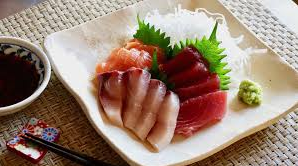

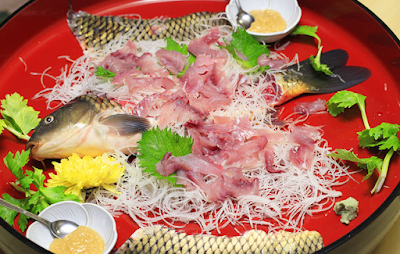
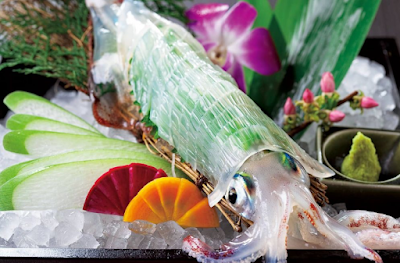
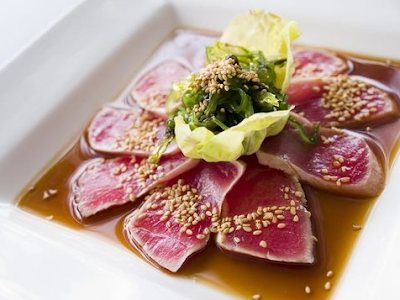
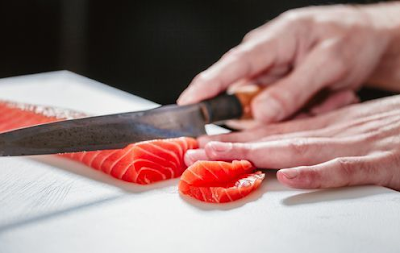
0 Response to "Japanese Food Sashimi"
Post a Comment